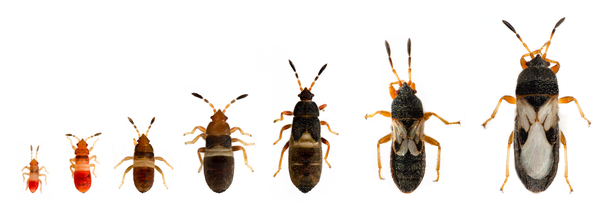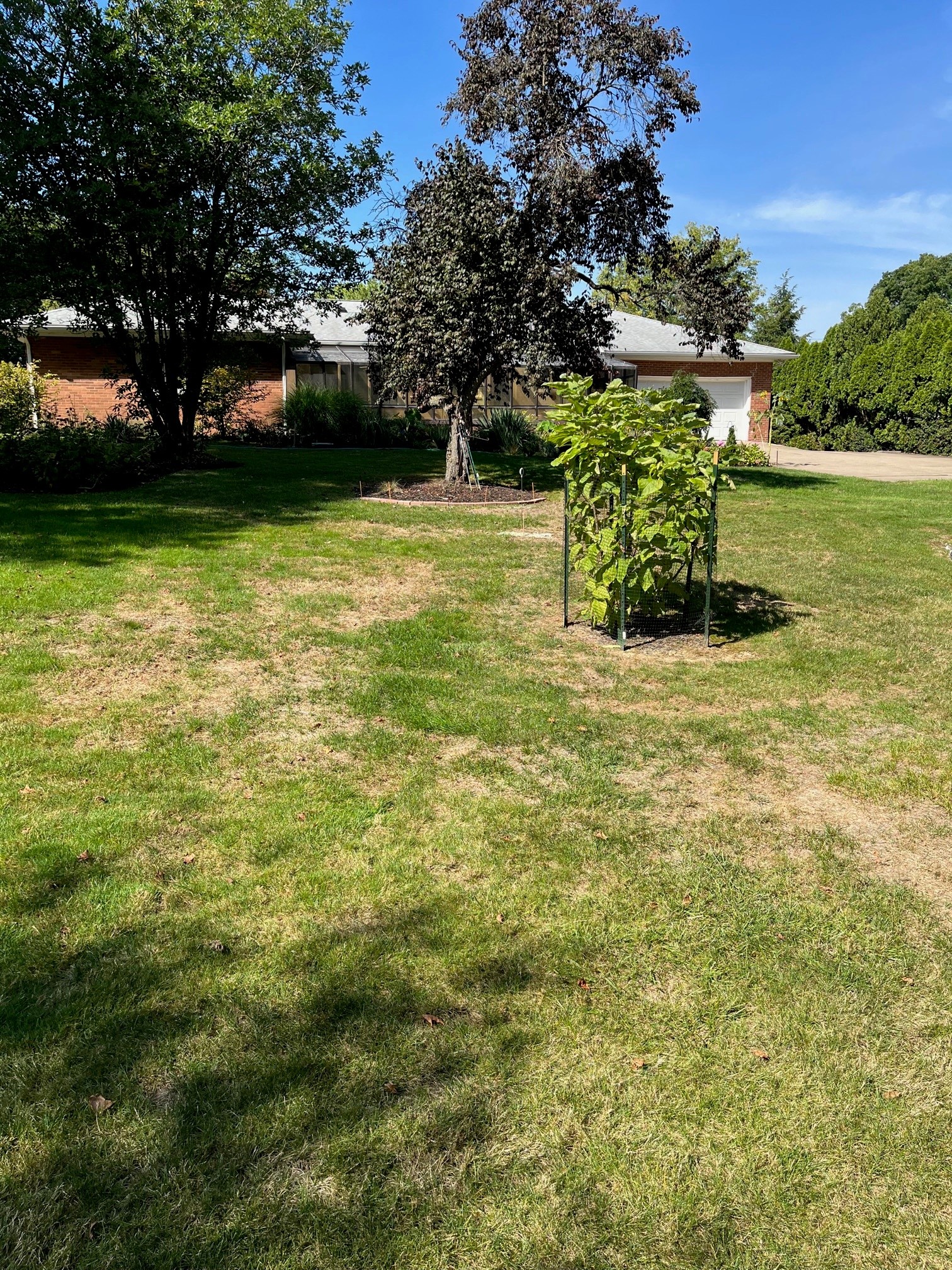
Symptoms

Chinch bugs can attack a lawn quickly as weather warms and adults move into open areas where females lay eggs. These eggs hatch and begin feeding on grass plants while releasing plant damaging toxins. Damaged areas first appear as yellowish to brownish patches which enlarge as the insects spread.
Chinch bugs tend to attack grass growing in sunny areas. This is so much the case that you can see the patterns of destruction that start as precisely aligned with the sunny spots in a lawn. So be on the lookout for damage in sunny areas especially near sidewalks, driveways and streets since these areas radiate the most heat.
The first sign of chinch bug damage is grass that looks wilted even after recent watering or rain. If your grass looks wilted on the same day you’ve watered it or the very next day, it’s a safe bet you have chinch bugs. During the next and final stage your grass will begin to turn yellow and eventually straw-colored brown. Once the affected area reaches that point, it is dead.
Chinch bug damage is most common during the hot summer months so the damage can be easily mistaken for drought stress or heat stress. There are also some diseases that mimic chinch bug damage such as brown patch, which also commonly affects Northeast Ohio lawns in the summer. For this reason, it is important that you act immediately if you are seeing browning/yellowing in the lawn.
How to Get Rid of Chinch Bugs
If chinch bugs take hold, contact Lawn Doctor right away for a Turf Insect treatment. Seeding will likely be needed to repair the area. Lawn Doctor also offers a 3-step preventative treatment for those looking to avoid this risk.

